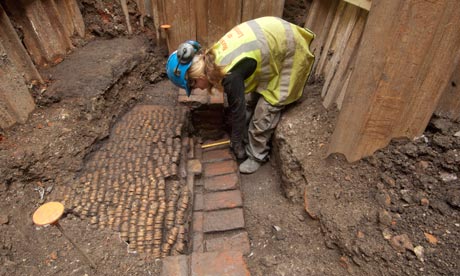
Opened in 1577 in Shoreditch, the theatre became home to Lord Chamberlain's Men - William Shakespeare's troupe - in 1597. It is widely believed that both Romeo and Juliet and Henry V were premiered on the Curtain's stage.
Both the Curtain and its neighbour, the Theatre, were built outside of the precincts of London proper, beyond the authority of the very Puritan Corporation of London which despised the theatres.
Sir John Spencer, Lord Mayor of London, vividly described the theatres in 1594 as "places of meeting for all vagrant persons and maisterles men that hang about the Citie, theeves, horsestealers, whoremoongers, coozeners, connycatching persones, practizers of treason and other such lyke."
The Curtain itself was immortalized by Shakespeare in Henry V:
O for a Muse of fire, that would ascend
The brightest heaven of invention,
A kingdom for a stage, princes to act
And monarchs to behold the swelling scene!
Then should the warlike Harry, like himself,
Assume the port of Mars; and at his heels,
Leash'd in like hounds, should famine, sword and fire
Crouch for employment. But pardon, and gentles all,
The flat unraised spirits that have dared
On this unworthy scaffold to bring forth
So great an object: can this cockpit hold
The vasty fields of France? or may we cram
Within this wooden O the very casques
That did affright the air at Agincourt?

That "wooden O" is now reduced to a few foundation walls and yard, but in these tantalizing clues, archaeologists hope to fully understand the true dimensions and structure of the building.
If the Renaissance in Italy expressed itself in art and architecture, the Renaissance in England was theatrical and literary in its expression. The Elizabethan theatre and playwrites set the stage for 500 years of popular entertainment and literature, helping tread the path to modern fiction and the multiplex.
For more info, check out the article in The Guardian.
No comments:
Post a Comment